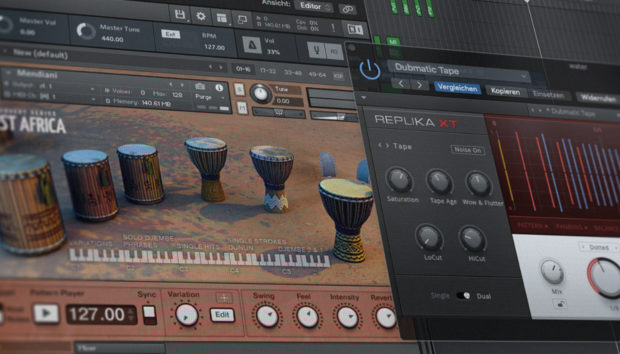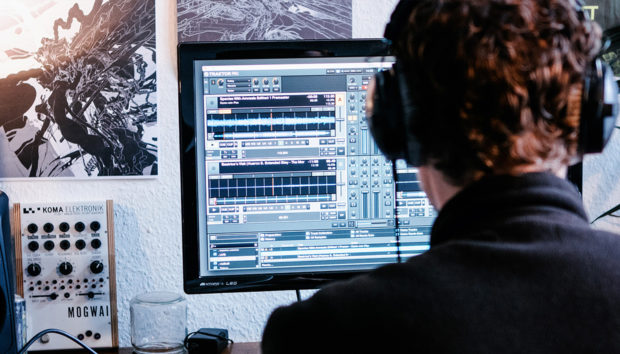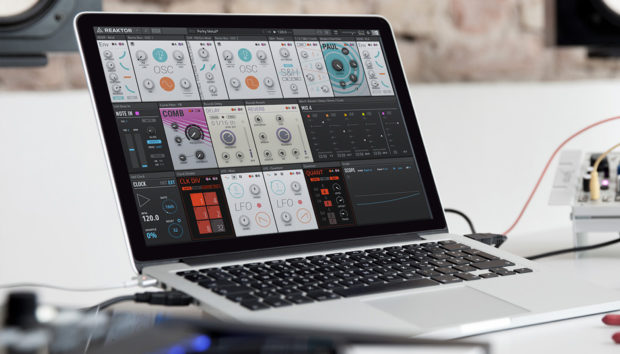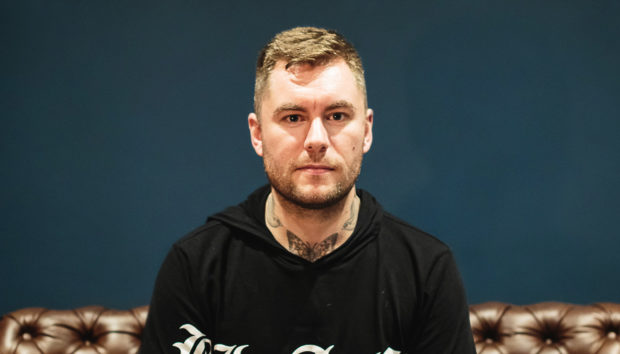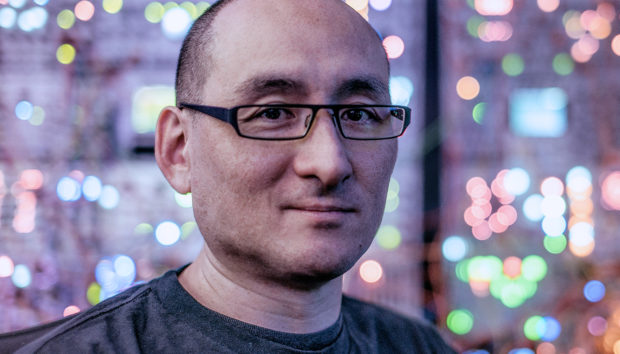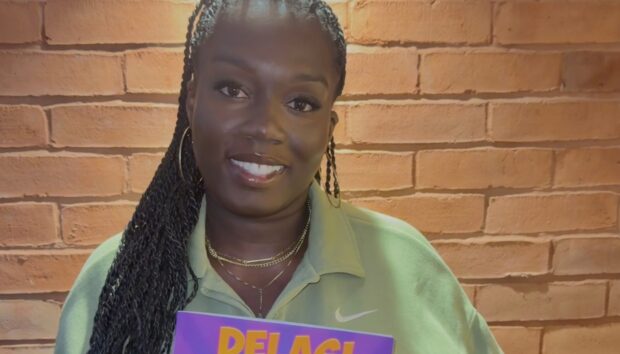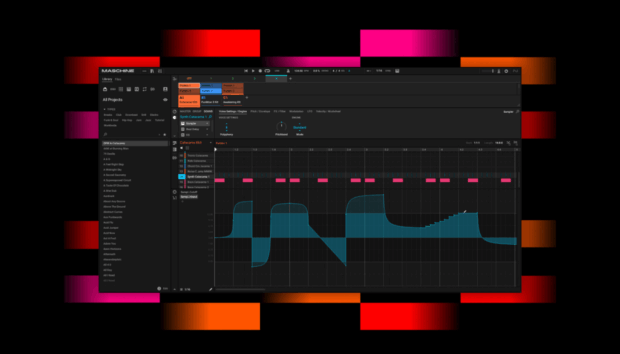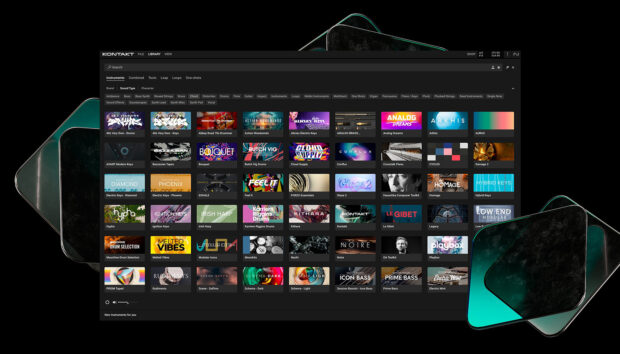Ruth Royall has built her reputation on fearless independence. With the upcoming release of her debut album Queen on her own label, Royall Sound, she has stepped fully into self-production.
Central to that evolution is Ozone, a tool that has allowed her to take complete control of her mixes while staying focused on what matters most: clear, powerful vocal delivery and bass that translates in any environment.
The lead single, ‘Forevermore,” is an obvious showcase of this.
Co-written with Brad Ellis and produced alongside Joe Lenzie of Sigma, it reflects Ruth’s shift toward a workflow where mastering is no longer a separate step but an extension of her creative process. With Ozone shaping everything from vocal clarity to low-end punch, she has been able to balance her role as a songwriter, producer, and live performer without compromise.
Jump to these sections:
- How Ozone gives Ruth full control of her mixes
- Balancing vocal clarity and heavy low end with precision
- Why mastering independence speeds up her workflow
- Tips for using Ozone’s most powerful modules
- The role of collaboration in building confidence as a producer
- How self-production shaped her debut album Queen
It is clear how much iZotope Ozone has become central to Ruth’s process. From refining her vocals to balancing low-end power, every step reflects her focus on independence and precision. Here’s what she had to say about taking control of her sound and shaping her debut album Queen.
How does having a tool like Ozone in your own hands change the way you approach mixing and arrangement compared to working with an engineer?

For me, the biggest difference is the level of control I have at my fingertips. Whether I’m processing my vocals remotely, prepping stems for my live show, or mixing down a live recording, Ozone lets me shape the sound exactly how I want it.
One of the most powerful features for me is the Stem Separation.
As a vocalist, being able to isolate and work on just the vocal mix is a game-changer. It allows me to bring my voice right to the front of the mix quickly and easily, which is essential for the kind of clarity and emotional delivery I want.
Spectral Shaper allows me to control things like sibilance in a vocal without having to layer multiple plugins.
When I’m preparing tracks for my live show, especially if I’m blending three or four tracks using grouped stems, I need to make sure nothing gets lost in the mix. Ozone helps me manage that beautifully. I can balance the low end across different tracks without sacrificing clarity or punch. With a live band involved, there are so many sonic elements happening at once, and Ozone allows me to keep everything clean, dynamic, and powerful, even in complex arrangements.
Ozone also speeds up my workflow. I can quickly apply a mastering preset or use the Master Assistant to get a sense of the finished mix and identify where level tweaks are needed. I love the fact that the controls are simple and it’s a really visual way of working, it doesn’t overcomplicate things, and you can achieve a clean sound quickly and easily without losing hours tweaking.
Pro tip from Ruth Royall: The Master Rebalance tool is really helpful for isolating parts of the track to then boost or reduce the gain. This is really helpful as you don’t have to go back into your project and tweak the mix. You can do it at the final stage.
What’s your typical signal chain like when Ozone is involved in the master? Are there any must-have steps?

My signal chain always varies depending on the track. I usually start with the Master Assistant. It’s such a powerful tool, not just because it speeds things up, but it actually rebalances the vocals during the analysis stage, which is great for me as a vocalist. It often suggests modules or settings I might not have considered, so it’s actually a great learning tool for the plugin. It doesn’t always give me the exact sound I’m after, but it gives me a solid starting point that I can tweak.
I typically start the chain with an equalizer. And one of my favourites in Ozone is the Transient/Sustain feature. Having that extra control over the sonics is incredibly useful, especially when you’re trying to get a track to feel dynamic.
The Impact module is a go-to for me. It’s amazing how much you can shape the overall feel of a track with just that one module. The ability to solo individual frequency bands is great. It gives me precise control over how different parts of the mix feel and allows me to really use my ears.
The Clarity module is another essential. I pretty much always use it. It helps to bring the vocals into sharper focus and makes sure my voice cuts through in the way I want, even when there’s a lot going on sonically.

Most of the music I produce lives in the bass-heavy world of drum and bass, garage, and dubstep, so Low End Focus is super helpful for tightening up that low end without muddying the mix. It helps keep things powerful and clean, especially when tracks are going out to big systems.
I also use Spectral Shaper a lot, especially for controlling sibilance in vocals. What I love is that, paired with Stem Separation, I can quickly isolate and adjust a vocal or even a drum part without having to dive back into the full project. That kind of flexibility makes a huge difference when I’m in a creative flow or working on live edits.
I usually finish the chain with the Maximizer. It’s so visual and intuitive to use, which I love, and it really helps boost loudness without squashing the sound. That’s great for me when I’m prepping blended tracks or alternate versions for live shows. I need them to hit hard and sound polished.
For producers who want to maintain independence, where does learning basic mastering fit into the bigger picture?

Mastering is essential, especially when you’re playing your music out live. It has a massive impact on the overall feel of a set. Learning how to master your own music gives you control over what elements are front and centre, and that really plays into shaping your identity as an artist. It’s not just about loudness – it’s about making intentional choices that define your sound.
That said, I do think in drum and bass there’s a bit of a “who has the loudest track” mindset, which I don’t think is always necessary and can sometimes flatten the character of a track. It’s about finding that balance, understanding how to make your music sound crisp, powerful, and polished, without sacrificing the vibe that makes it yours. If you can do that, you’re going to stand out.
And it’s not just about playing live.
A well-mastered track makes a huge difference when you’re pitching to labels or sync opportunities. I do a lot of work in the pitch space for TV and film, and if a track sounds ready to go, I’m way more likely to get selected. Knowing how to get it sounding that good myself without having to rely on an engineer every time saves time, money, and lets me move faster and more confidently. That kind of independence opens up more opportunities, which is everything when you’re building a sustainable career.
How has taking full control of your sound helped you push through industry pushback or creative doubt?

It’s definitely been a journey.
I think most self-taught artists deal with some level of imposter syndrome, and I’m no exception. Taking control of my sound didn’t happen overnight. It came gradually through collaboration. Working with other producers on my album gave me space to learn, experiment, and get real-time feedback on my production. That process helped me build confidence in a really organic way.
What I’ve realised is that the more I tried to get super technical, the less the music sounded like me. I had to let go of the pressure to tick every technical box and start trusting what felt good instead. I produce by instinct, and when producers I admire, like Doctor P (who was involved in a lot of the co-production for the album), were telling me they loved the tracks I was making, it was a huge confidence boost. That kind of support reminded me that there’s power in staying authentic.
Taking control of my sound has helped me push back against the idea that I need to fit into someone else’s version of how music “should” be made. I’ve learned to trust my own process, and that’s made me not only a better producer but a more empowered artist overall.
Pro tip from Ruth Royall: Use the Delta tool to allow you to hear what Ozone is actually doing to the input sound on each module you use.
On your album Queen, how did Ozone help you carve space around the vocal while keeping the low end powerful?

The vocals and the bass are the core of this album, so this was essential!
I mean, a bass music album called Queen is basically those two elements embodied in sound design, right? Haha.
I used Ozone throughout the whole process on pretty much everything. My writing style is quite layered. I tend to throw all my ideas into a track and then figure out what actually sticks. That can get busy really quickly, especially when you’re trying to let a vocal shine and still keep that heavy low-end intact. Ozone helped me make those decisions more clearly.
By the time I’m at the mastering stage, it really lets me hear what’s essential and what can be stripped back.
The Impact module was helpful for that. It gave me control over the dynamics so I could highlight the most important frequencies, like the vocal presence or the punch of the sub, without everything fighting for space or getting muddy. It’s such a clever tool for keeping the energy and also the dynamic of the track.
The Exciter is also something I use a lot, especially for boosting the bass in a way that still felt musical. And the Transient/Sustain feature gave me even more precision. I could dial in the attack or pull something back just enough to give the vocal room to breathe. That level of control made a huge difference when I was trying to balance emotional delivery but keep the tracks sounding club-ready.
Pro tip from Ruth Royall: Use the Stem Separator to tweak the vocal mix at the end so you don’t have to layer multiple plug-ins on your vocal chain. This will ultimately save your CPU.
What’s your advice for artists who feel overwhelmed trying to self-produce and finish their own records?

Don’t be afraid to ask for help. Collaboration is key, not just for learning, but for building confidence. Working with other people has been one of the best ways I’ve developed my own production skills. Being in a creative space with others gives you perspective, and when you take that experience back into your own studio, you come at it with more clarity.
There’s so much amazing educational content online, and that can be really helpful, but honestly, the most important thing is to trust your ears. If something sounds good to you, that matters. One of the best habits I’ve picked up is testing my tracks on multiple systems, in the car, on my phone, through AirPods, and just seeing how it sounds.
The main thing is to have fun with it. Don’t get too caught up in trying to be perfect. Experiment, make mistakes, and focus on making music that makes you feel good. That’s the most powerful thing you can do as an artist.
Pro tip from Ruth Royall: Use the Master Assistant to give you a starting point and help to speed up your workflow. You can also use this throughout your songwriting process to give you a feel for the end result without having to spend loads of time tweaking a master chain you won’t necessarily use at the end.
Wrapping it all up
Ruth Royall’s story is proof of what happens when an artist takes control of every stage of their music. Ozone has become a key part of how she works, helping her shape her tracks with confidence and translate her vision directly into her mixes. Her debut album Queen reflects that independence, pairing technical precision with an instinctive approach that keeps her music personal and direct.
As she prepares to bring the album to audiences across Europe, her process offers a clear example for producers looking to develop their own workflow.
Her use of Ozone shows how the right approach can make complex tasks simple. Ruth has built a space for her music on her terms, and with Queen, she is ready to share it in full.
